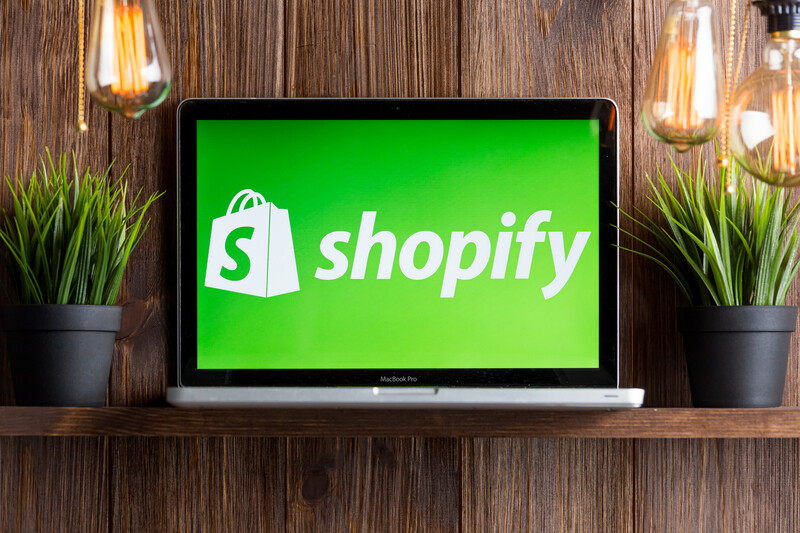Unless you are trading in the UK only with an income of less than £85,000 and are NOT dropshipping from an overseas supplier, then you will need to consider how to account for VAT on your Shopify sales.
What is Shopify VAT?
VAT is a tax that is levied on the sale of most items in the UK and EU. An e-commerce business is responsible for collecting this tax by adding it to the sales value of its product and then remitting the tax collected to the tax authorities. Typically there is no VAT on basic foodstuffs and children’s clothes, but otherwise, most products do attract VAT. Applicable VAT rates vary around the EU from 17% to 27%. The applicable VAT rate is determined by the location of your customer.
Outside of the EU, most countries levy some form of Goods & Service Tax (“GST”).
How to Register for a Shopify VAT number and Which Scheme Should I Choose?
In The UK you can register and obtain a valid Shopify VAT number registration on the HMRC website and across the EU tax authorities provide similar options. Doing so will provide you with a valid VAT number. However, there are a number of different types of EU VAT registration and you will need to select the right one for you. If you store inventory in any EU country you will need a valid VAT registration in that country, regardless of the number of sales you achieve in that country.
If you fulfill your consumer sales from outside the EU and your consignments have a value of less than €150 (this excludes any postage charges included in the sale value), then the import One Stop Shop (“iOSS”) will enable you to trade across all 27 EU countries with one single return submitted and paid in one jurisdiction.
If your exports to the EU are valued at more than €150 then they will have to pass through customs and VAT (and duty if applicable) will need to be paid on entry. You will need to nominate an “Importer of Record”. This can be the customer, but it does mean that they will have to pay VAT and possibly duty before receiving their parcel. Since this isn’t a particularly good customer experience it’s not a popular choice. Many carriers have schemes whereby they will pay anything due and bill your company for any VAT/duty they pay on your behalf. The charges for this service vary considerably from one carrier to the next.
The One Stop Shop (“OSS”) also allows you to register for VAT in one EU country and submit and pay to that one jurisdiction. There are two schemes – the Union and the Union. The Union scheme can be used when fulfilling from within the EU. The non-Union scheme can be used if supplying digitally supplied services to consumers in the EU.
It is quite possible that you could use all 3 schemes (this is unlikely but we certainly have clients using 2 schemes) if you fulfilled some orders from outside the EU, some from within, and also sold digitally as well as physical products. You may need individual country registrations as well (where you store inventory).
There are also different schemes in the UK. The most common one used by small businesses is the flat rate scheme. This is a simplification scheme. On a standard VAT scheme, you would account for VAT on your sales at 20%, but you can then deduct the VAT you have paid on your costs if you have a valid VAT invoice or receipt. You have to do this on a case-by-case basis and ensure you have the proper supporting invoice/receipt for every item of the cost you wish to claim. If you use the flat rate scheme you simply pay HMRC a flat percentage of your turnover. For a general retailer, this is 7.5%, with a 1% discount in the first year. Depending upon how much VAT you would reclaim on the standard scheme this may be financially beneficial as well as more straightforward (there are still 45 pages of guidance!). To be able to use this scheme your net turnover must be less than £150,000 and you should not use it if you expect to exceed this. When considering the financial difference between the standard scheme and the flat rate scheme it is important to realise that the comparison in percentages is not between 20% and 7.5%. 20% VAT is applied to your sales value so that a £100 sale attracts £20 VAT and the price to the customer is therefore £120. The 7.5% flat rate percentage is applied to the gross sale value, in this case, £120. The comparable value of VAT is not therefore £7.50 but £120 x 7.5% = £9.
VAT on Shopify Fees
Your Shopify fees are not billed from the UK and are therefore subject to what is known as the reverse charge mechanism. This means that your account for the VAT that Shopify would have charged you, had they done so, on your UK VAT return, but then also claim it back on the same return, so the net impact of your Shopify fees on your VAT liability is nil. However, it’s important to recognise that when preparing your VAT on Shopify fees return, the payouts that you receive from your bank do not represent your revenue. For example, if you receive a payout of £110 from Shopify, this may be £120 of revenue after the deduction of £10 of Shopify fees. The VAT payable to HMRC on this revenue is 20% of the net revenue, therefore £20. If however, you only accounted for VAT on your net payout, you would have only accounted for VAT of £18.33, thereby understanding your VAT due to HMRC. When this error is made on a larger scale, it can lead to significant backdated VAT liabilities when the error is eventually identified.
Countries That Charge and Collect VAT
VAT is applicable across the whole of the EU and in the UK. Outside of the EU, all major economies have some form of sales tax, although the name may change (for example in Japan it is Consumption Tax, but Goods and Service tax (“GST”) is the most common name given to sales taxes). Many countries have registration thresholds. However, for non-resident companies, those thresholds are often lower or don’t apply at all. Whilst the threshold is £85,000 for sales on a rolling 12-month basis in the UK, there is no threshold for non-resident businesses and even UK businesses that dropship their products from outside of the UK have no threshold (for products with a value of less than £135). The same applies in the EU if your business is not located within the EU.
How To Collect Shopify VAT
Unlike marketplaces like Amazon and eBay, Shopify won’t collect VAT for you or assist with submitting the returns, since it is not a marketplace (Marketplaces are required to do this in certain circumstances). However, there are settings in Shopify that you can adjust in order that Shopify will calculate the sales tax applicable to a sale. In your Shopify account,, you can navigate to Settings < Taxes where you can inform Shopify of the jurisdictions where you have sales tax registrations. Once you have entered all your VAT registration numbers Shopify will apply the appropriate rate of VAT to your sales. You will have to use additional settings if some of your products or services are not standard-rated, to ensure you don’t account for VAT where not required, or account for VAT at too high a rate. That is as far as it goes as regards sales taxes in Shopify. That data will then need to be recorded in your accounting system, and in the UK, that means using Making Tax Digital compliant software (like Xero, our preferred choice). Using an application like A2X also assists greatly as A2X will summarise your Shopify data before sending it to Xero and will make it a lot easier to reconcile your settlements.
Need Shopify Accountants?
If you would like to discuss how we can help with your Shopify UK or International sales tax compliance and planning please please get in touch and call on 01942 725419.


